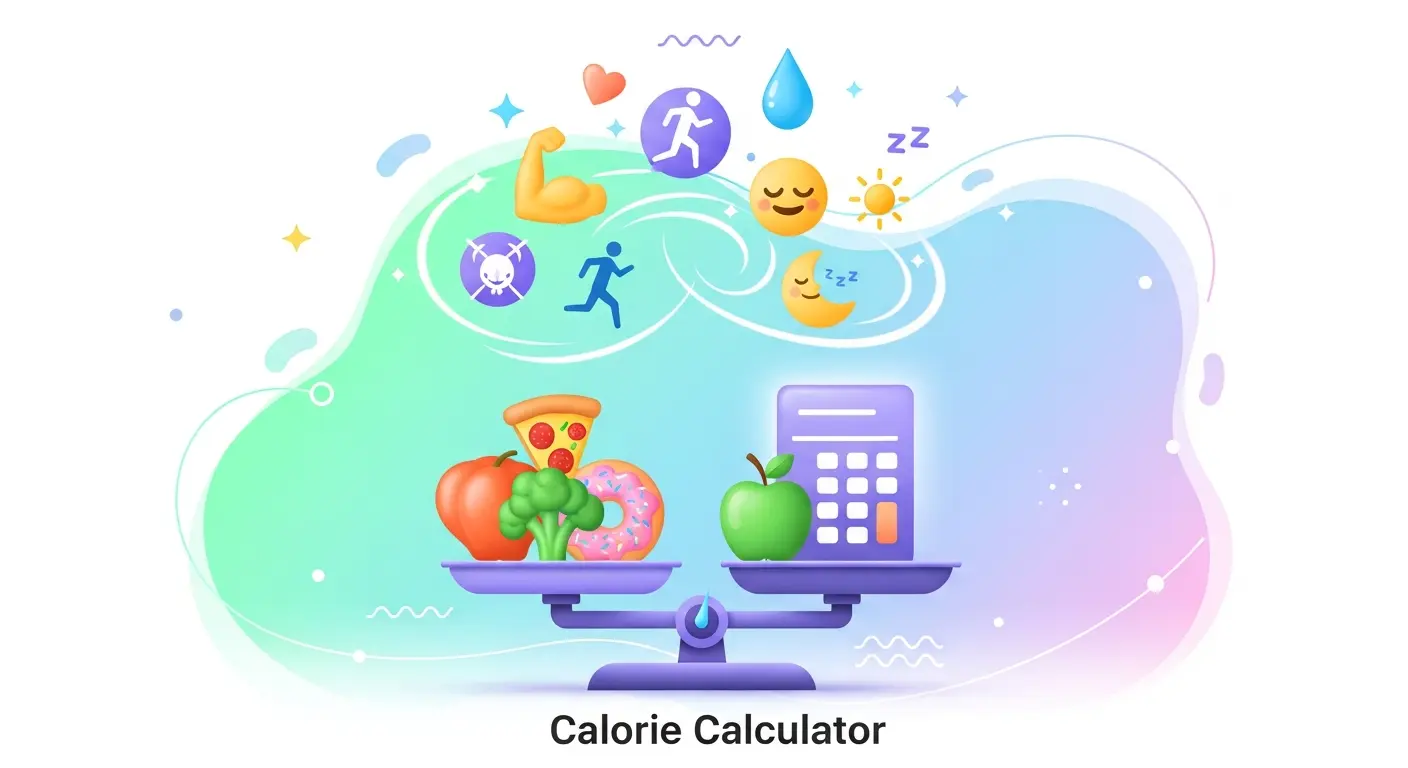Calorie Calculator
Calculate your daily calorie needs using the Mifflin-St Jeor formula. Find your BMR, TDEE, and personalized weight goals.
📋 Quick Navigation
💪 TDEE
🏃 Activity Burn
📊 Your Stats
🎯 Weight Goals
🧮 Calorie Calculation Formulas
Mifflin-St Jeor BMR Formula
The Mifflin-St Jeor equation is one of the most accurate methods for calculating Basal Metabolic Rate. It accounts for gender, age, weight, and height.
BMR = 10 × weight (kg) + 6.25 × height (cm) − 5 × age (years) + 5
BMR = 10 × weight (kg) + 6.25 × height (cm) − 5 × age (years) − 161
Example Calculation
BMR = 10(75) + 6.25(180) - 5(30) + 5
BMR = 750 + 1125 - 150 + 5 = 1730 kcal/day
Total Daily Energy Expenditure (TDEE)
TDEE is calculated by multiplying your BMR by an activity factor that represents your daily activity level.
Activity Factors
| Activity Level | Description | Factor |
|---|---|---|
| Sedentary | Little or no exercise, desk job | 1.2 |
| Lightly Active | Light exercise 1-3 days/week | 1.375 |
| Moderately Active | Moderate exercise 3-5 days/week | 1.55 |
| Very Active | Hard exercise 6-7 days/week | 1.725 |
| Extra Active | Very intense exercise + physical job | 1.9 |
Weight Change Calculations
(Approximately 0.5 kg or 1 lb loss per week)
(Approximately 0.5 kg or 1 lb gain per week)
BMI (Body Mass Index) Calculation
Or: BMI = [weight (lbs) / [height (inches)]²] × 703
🔥 Understanding BMR & TDEE
What is BMR (Basal Metabolic Rate)?
BMR is the number of calories your body burns at complete rest to maintain basic physiological functions. These functions include:
- Breathing and circulation
- Cell production and replacement
- Protein synthesis
- Maintaining body temperature
What is TDEE (Total Daily Energy Expenditure)?
TDEE is the total number of calories you burn in a day, including BMR plus all physical activities. It accounts for:
- Basal Metabolic Rate (BMR)
- Thermic Effect of Food (TEF) - calories used to digest
- Exercise and physical activity
- Daily activities and movement
How to Use These Numbers
🔸 To Lose Weight: Consume 300-500 calories below your TDEE
🔸 To Gain Weight: Consume 300-500 calories above your TDEE
Factors Affecting BMR
Your BMR is influenced by several factors:
- Age: BMR decreases about 2% per decade after age 30
- Gender: Men typically have higher BMR than women
- Muscle Mass: More muscle increases BMR
- Genetics: Metabolism varies between individuals
- Hormones: Thyroid and other hormones affect BMR
🏃 Activity Level Guidelines
Sedentary (Activity Factor: 1.2)
Little or no exercise. Typical for desk jobs or minimal daily movement. Examples: office worker, student, sedentary lifestyle.
Lightly Active (Activity Factor: 1.375)
Light exercise 1-3 days per week. Examples: light walks, gentle yoga, occasional recreational activities.
Moderately Active (Activity Factor: 1.55)
Moderate exercise 3-5 days per week. Examples: regular gym visits, jogging, sports practice, active job.
Very Active (Activity Factor: 1.725)
Hard exercise 6-7 days per week. Examples: intense training, competitive sports, physically demanding job.
Extra Active (Activity Factor: 1.9)
Very intense exercise daily plus physical job or twice-daily training. Examples: athletes, laborers, personal trainers.
